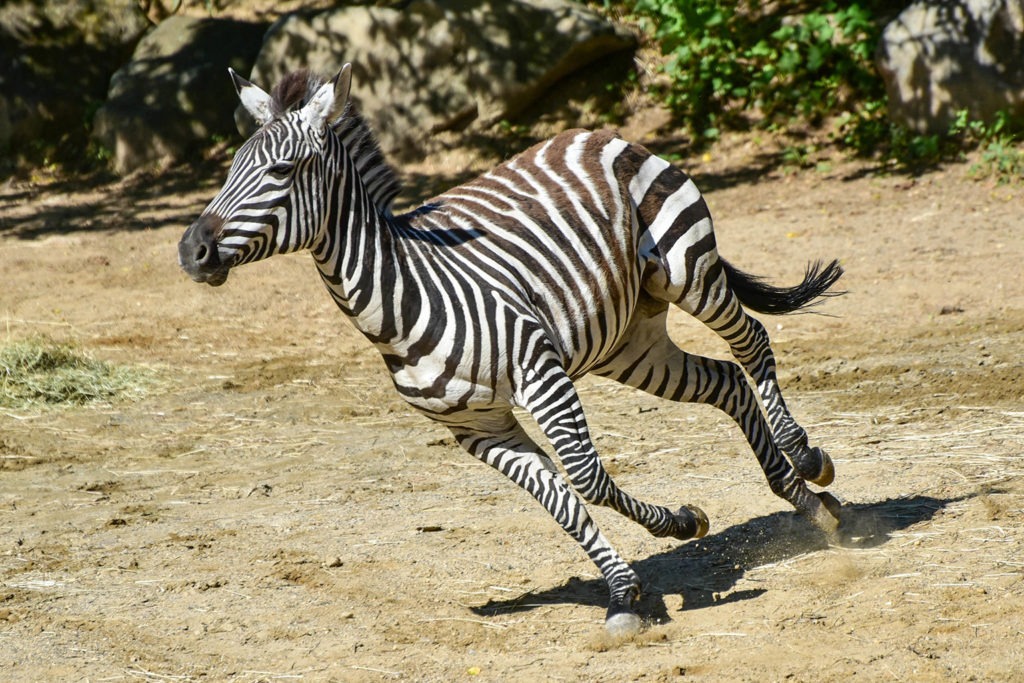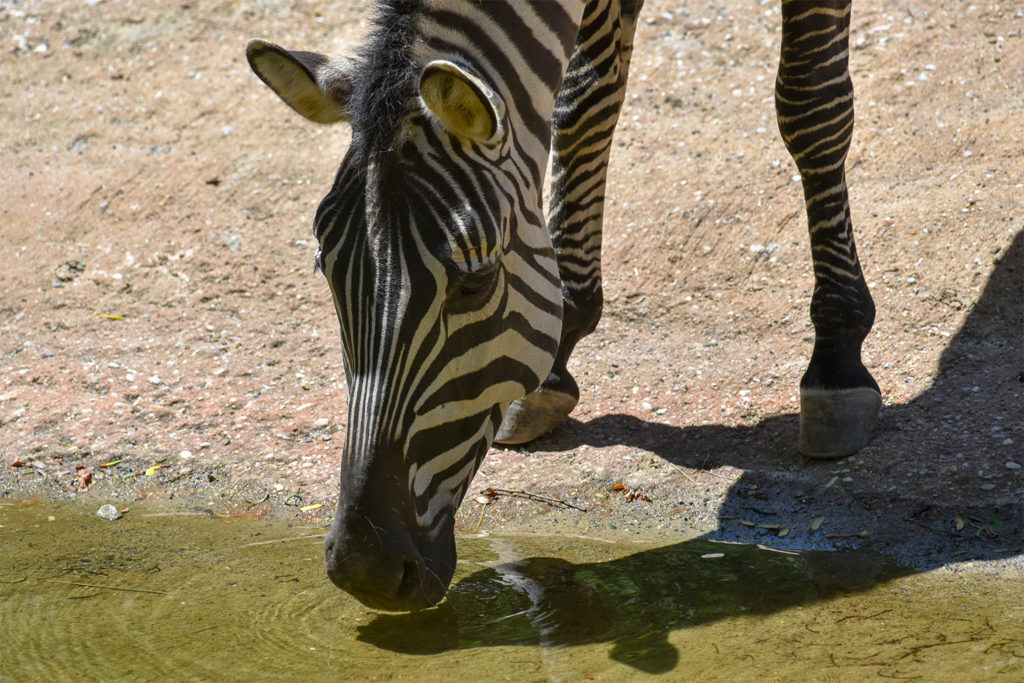Overview
“Where I live”
There are four species of zebra: Plains, Grevy’s, Cape Mountain, and Hartmann’s Mountain. The Plains Zebra, on exhibit at The Maryland Zoo, is the most common and geographically widespread. It is also known as the Common Zebra or Burchell’s Zebra. Plains Zebras roam Africa’s grasslands and venture into woodland and marshy areas as well. Check them out in their exhibit in the African Journey near the Watering Hole at the Maryland Zoo.
“How I live there”
The Plains Zebra is very social and lives in family groups made up of a single stallion, one or more mares, and recent offspring. Group size can vary in response to habitat: the better the grazing opportunity, the larger the group can be. Zebras spend their time grazing and watching for predators. They eat mostly short grasses, but other vegetation as well. They prefer to be near herds of other grazing animals, and family groups will sometimes band together to form large herds. Zebras appreciate safety in numbers. Large numbers reduce the likeliness of any individual animal being attacked and also guarantee more eyes watching for predators.
“Making my mark”
Plains zebra are often the first grazers to enter a well-vegetated area. Wildebeests and gazelles tend to move in only after Plains zebra have trampled and shortened the grasses.
Predators such as lions and spotted hyenas depend on Plains zebra as a staple of their diets. Humans also hunt them for meat and hides.
And what safari to Africa’s grasslands would be complete without zebra? They are among the wildlife that tourists hope and expect to see. As such, they are important contributors to the growing ecotourism industries of several African nations.
“What eats me”
Zebra are always on the lookout for lions and other predators. They know that they are more vulnerable to predators in tall grass, which is why they prefer shorter grasses, especially at night. They also know that they are safer in a group. Individual members of a group will take turns standing watch. Members of the group may try to bite or kick attacking predators in order to protect foals and other herd mates. The zebra’s most reliable defense, though, is to flee!
Raising Young
The stallion in a zebra family group mates with each member of his harem, starting with the most dominant or “alpha” female. Plains zebra mating peaks during the rainy season. Moments after birth, a zebra foal is able to stand, walk, and suckle. It will shadow its mother for months to come. If separated from her or the rest of the group, it is highly vulnerable to attack.
Conservation
There are far fewer Plains zebra today than there once were because of human pressures such as hunting and encroachment on habitat. However, Plains zebra are not currently a threatened or endangered species.
Taxonomy
- Kingdom: Animalia
- Phylum: Chordata
- Subphylum: Vertebrata
- Class: Mammalia
- Order: Perissodactyla
- Family: Equidae
- Genera: Equus
- Species: quagga



